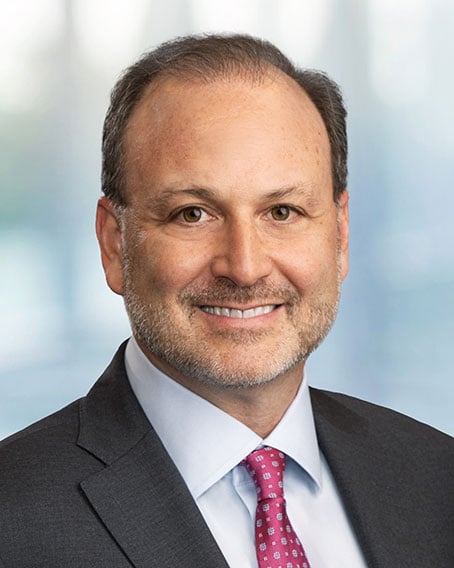Two recent FDA draft guidances respond to directives from Congress to improve transparency with medical device firms regarding inspections, including the process for requesting nonbinding, post-inspection FDA feedback on proposed corrective actions. Specifically, on February 19, 2019, FDA published a draft guidance entitled “Nonbinding Feedback After Certain FDA Inspections of Device Establishments” (hereafter the “Nonbinding Feedback Guidance”), and on March 29, 2019, FDA published a draft guidance entitled “Review and Update of Device Establishment Inspection Processes and Standards” (hereafter the “Device Inspection Process Guidance”).
These draft guidances implement statutory reforms enacted in August 2017 as part of the FDA Reauthorization Act of 2017 (“FDARA”). FDARA required that FDA establish uniform processes and standards regarding certain aspects of domestic and foreign device establishment inspections (other than for-cause inspections). Additionally, FDARA required that FDA establish a mechanism for providing nonbinding feedback regarding proposed actions to resolve observations noted in device inspections when such observations meet certain criteria. FDARA also required FDA to issue draft guidance within 18 months of enactment to implement these new provisions.
As described further below, despite the promise of the FDARA reforms to provide clarity and uniformity for medical device firms, these FDA draft guidances interpret some of the statutory provisions in a manner that is more restrictive and less impactful than industry may have anticipated. As a result, the practical value of these reforms may be limited unless FDA revises the draft guidances.
Nonbinding Feedback Guidance
Under section 702 of FDARA, FDA must provide non-binding feedback after an FDA inspection of a device establishment if (i) the “owner, operator, or agent in charge of such establishment” requests feedback “in a timely manner” and (ii) the request relates to actions proposed to be taken by the establishment in response to a Form FDA 483 (“483”) “that involve a public health priority, that implicate systemic or major actions, or relate to emerging safety issues (as determined by the Secretary).” When such criteria are met, FDA must provide nonbinding feedback within 45 days of receipt of the request. The Nonbinding Feedback Guidance interprets key terms not defined by the statute and provides other clarifications regarding the feedback request process.
Requesting Feedback in a “Timely Manner”
The Nonbinding Feedback Guidance states that a request will be considered timely if it is submitted no later than 15 business days after issuance of the 483. In other words, a request for feedback should be submitted on the same timeline as the firm’s response to the 483.
Eligibility Criteria for Feedback
The Nonbinding Feedback Guidance explains that a request should clearly state the inspectional observations for which nonbinding feedback is being requested, and should include a detailed description of the actions proposed in response to those observations, including a timeline and supporting documentation, as appropriate. FDA also asserts that the request should contain a detailed justification explaining why the requestor believes that one or more of the observations in the 483 meets at least one of the three statutory eligibility criteria. According to the draft guidance:
- A 483 observation will meet the criterion for “involv[ing] a public health priority” if it requires resolution because “conditions have resulted in, or if unaddressed are likely to result in, the release of a violative product that may cause death or serious injury.”
- A 483 observation will meet the criterion for “implicat[ing] systemic or major actions” if “the quality system or subsystem(s) deficiencies, when considering all pertinent factors, have resulted in, or would likely result in, the production of nonconforming, violative, and/or defective finished devices.”
- A 483 observation will meet the criterion for emerging safety issues if it “relate[s] to an emerging safety issue that if, unresolved, is likely to result in release of devices that are likely to cause death or serious injury.”
FDA’s Response to a Request for Feedback
Upon receiving a timely request and verifying that the request has been made by an appropriate person, FDA will review the stated justifications in the request to determine whether the eligibility criteria have been met. If none of the statutory eligibility criteria is met, FDA will notify the requestor within 45 days that the request is not eligible to receive nonbinding feedback. If the eligibility criteria are met, FDA will provide nonbinding feedback within 45 days that identifies whether the proposed actions, if appropriately implemented, appear to be “adequate, partially adequate or inadequate.” If FDA finds the proposed actions to be partially adequate or inadequate, FDA intends to, among other things, explain why they do not appear to be adequate and provide a recommendation on what would be necessary for the actions to be considered adequate.
The Nonbinding Feedback Guidance makes clear that a firm’s decision to follow FDA’s nonbinding feedback will not guarantee that FDA will view specific issues identified in the 483 as resolved, and that providing nonbinding feedback does not preclude or limit FDA’s regulatory options. Nevertheless, the procedures outlined for obtaining nonbinding feedback do open a pathway for obtaining information from the agency that may be useful as firms strive to correct important deficiencies identified in routine device inspections to FDA’s satisfaction.
Limitations of the Draft Guidance
The strict timelines for requesting feedback proposed in the Nonbinding Feedback Guidance, as well as FDA’s narrow interpretations of the statutory eligibility criteria, would likely limit the practical utility of the nonbinding feedback process. Industry comments submitted to FDA, including those of the Advanced Medical Technology Association, recommend that FDA address several issues prior to publishing the final guidance. Key issues include that:
- The 15-day deadline for requesting feedback would force firms to rush their remediation plans and prevent them from obtaining feedback on problems that may arise once remediation is underway. FDA’s interpretation would effectively limit firms to one shot at obtaining feedback. It also would burden firms with drafting their feedback requests in the same short time window they have for developing initial 483 responses.
- Under FDA’s interpretation of the statutory eligibility criteria, corrective actions to prevent non-serious injuries or to prevent device shortages would never involve “public health priorities,” and actions would not implicate “systemic or major actions” unless the underlying deficiencies would result in violative or defective devices. Yet FDA issues 483 observations, and firms routinely implement major process changes, in the absence of identified serious safety risks or device defects.
- The Nonbinding Feedback Guidance only contemplates requests for feedback following the issuance of a 483 and does not address whether firms can request FDA feedback regarding observations from an inspection under the Medical Device Single Audit Program (“MDSAP”). MDSAP is a voluntary program in which a medical device firm can have an MDSAP-recognized auditing organization conduct a single audit that satisfies the requirements of multiple regulatory authorities, including FDA.
Device Inspection Process Guidance
Under FDARA section 702, FDA is required to adopt uniform processes and standards applicable to inspections (other than for-cause inspections) of domestic and foreign medical device establishments that address, among other things (1) “pre-announcement” (i.e., advance notification) of such inspections, (2) estimating the length of such inspections as part of the pre-announcement, (3) regular communications during device inspections about status, and (4) exceptions to such processes and standards. Prior to FDARA, FDA already had existing policies addressing many of these issues, including, for example, in its Investigations Operations Manual. However, hearing testimony prior to the enactment of FDARA suggested that inspections of foreign device establishments were often more efficient than those of domestic establishments, and the sponsors of the draft legislation that formed the basis of FDARA section 702 came to that conclusion. See, e.g., Examining Improvements to the Regulation of Medical Technologies: Hearing Before the Subcomm. on Health of the H. Comm. on Energy & Commerce, 117th Cong. 32-33, 35-37 (2017); H.R. 1736, 117th Cong. § 1(2) (2017). The Device Inspection Process Guidance is intended to standardize FDA policies, consistent with the FDARA reforms.
Pre-Announcement Communication
In the Device Inspection Process Guidance, FDA proposes that an investigator should notify the owner, operator or agent in charge of a medical device establishment by telephone prior to a surveillance or pre-approval inspection no less than five calendar days in advance of the inspection. In the case of foreign inspections, the same time frame for notification applies, although FDA acknowledges that notification may practically need to occur more than five days in advance due to the requirements of particular country clearances.
On the pre-announcement call, an FDA investigator should describe the “type and nature” of the inspection, including whether the inspection is scheduled as “abbreviated,” “comprehensive,” or “pre-approval” (presumably referring to the device inspection types defined in FDA Compliance Program Guidance Manuals 7382.845 and 7383.001). In addition, investigators may communicate with the firm in advance regarding appropriate working hours during which the inspection is likely to take place and, “to the extent possible,” FDA should provide advance notice to the firm regarding “some” of the records that may be requested during the inspection.
Standard Inspection Time Frame
The draft guidance provides three to six continuous business days as the agency’s estimate of the reasonable time frame for a surveillance or pre-approval inspection, depending on the complexities of the firm’s operations, availability of knowledgeable staff, and the nature of observed deficiencies. Although the draft guidance states that the estimated inspection duration should be shared with the firm as part of the pre-announcement call, the investigator is free to extend an inspection unilaterally, so long as the investigator “identifies a reason that additional time is needed and communicates this verbally to the other party.”
Communication During Inspections
Consistent with existing FDA policy described in the Investigations Operations Manual, the draft guidance states that “when time and circumstances permit,” investigators should make “every reasonable effort” to discuss all observations with management of the establishment as they are observed, or on a daily basis, to minimize errors and misunderstandings.
Limitations of the Draft Guidance
FDA suggests in the Device Inspection Process Guidance that it recognizes the value of “improving uniformity in investigators’ approaches to routine and pre-approval inspections, both before and during.” Yet it is hard to escape concluding that FDA has drafted this document so as to maximize its flexibility (i.e., permit maximum non-uniformity) and to minimize change to its current practices. The advance notice provisions in the draft guidance appear to be the same as those that FDA currently follows in practice, and it seems unlikely that FDA staff would feel compelled to operate any differently than they have previously due to recommendations in the draft guidance, such as that they “may” communicate with a firm in advance about appropriate working hours for an inspection, “to the extent possible” may provide advance notice of “some” records to be reviewed, and should adhere to a stated inspection timeline unless they “identif[y] a reason that additional time is needed.” Nonetheless, it is possible that implementation of this guidance may over time improve the consistency of FDA’s device inspection practices.
FDA will be accepting comments on the Device Inspection Process Guidance until May 28, 2019.
* * *
Ropes & Gray will continue to monitor these developments affecting the medical device industry. If you have any questions about how these issues may impact your interests, please contact any member of Ropes & Gray’s FDA regulatory practice or your usual Ropes & Gray advisor.
Stay Up To Date with Ropes & Gray
Ropes & Gray attorneys provide timely analysis on legal developments, court decisions and changes in legislation and regulations.
Stay in the loop with all things Ropes & Gray, and find out more about our people, culture, initiatives and everything that’s happening.
We regularly notify our clients and contacts of significant legal developments, news, webinars and teleconferences that affect their industries.



